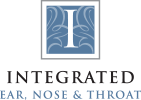THE MOST COMMON RHINOPLASTY QUESTIONS ANSWERED
Besides the eyes, the nose is the first thing people notice when they see a face. Rhinoplasty can improve the shape, size, and function of the nose. Most people get this surgery to feel more confident in their looks. People who are unhappy with the shape or size of their nose, and decide to have rhinoplasty should feel free to ask our team at Integrated ENT as many questions as they can think of during their rhinoplasty consultation.
IS THE PATIENT A GOOD CANDIDATE FOR THE SURGERY?
Candidates for rhinoplasty are in good overall physical and mental health. Most people get rhinoplasty for cosmetic reasons, but others may wish to improve breathing function through this surgery. Also, candidates for rhinoplasty should have realistic expectations as to what can be achieved from this surgery.
WHAT’S THE DIFFERENCE BETWEEN AN OPEN AND CLOSED PROCEDURE?
There are two types of rhinoplasty techniques, open and closed. An open procedure is when the surgeon makes an incision through the bit of tissue between the patient’s nostrils, called the columella, then opens up the nose to operate. In a closed procedure, the doctor makes incisions inside the nose. Open procedures are often done when the nose has been injured or when the patient wants their nose dramatically reshaped. Closed procedures are for more minor and delicate corrections.
IS A RHINOPLASTY AN INPATIENT OR OUTPATIENT PROCEDURE?
Most rhinoplasties are outpatient procedures. This means that the patient is free to go home the same day of the surgery after a period of rest and monitoring in a recovery room. However, in some cases, the surgeon may ask the patient to stay overnight.
WHAT SORT OF ANESTHESIA IS GIVEN?
General anesthesia is usually given for a rhinoplasty. This means that the patient is completely asleep and feels no pain.
HOW MANY TIMES CAN A PATIENT HAVE A RHINOPLASTY?
Generally, patients only get one rhinoplasty. This is why it is important to be open and honest with your surgeon about your concerns and expectations. If needed, a revision rhinoplasty can be done. This surgery is for patients who have undergone a previous rhinoplasty and are unhappy with the results, or the nose has become damaged in some way. About 15% of all rhinoplasties are revision rhinoplasties.
WHAT IS RECOVERY LIKE?
For most patients, whatever discomfort that comes after the anesthesia wears off can be handled with pain medications. They should sleep with their head elevated as they heal, avoid hot areas, and avoid sneezing. Patients will notice some change immediately but with swelling, bruising, and inflammation, it will take some time to see the most dramatic results.
Contact Integrated Ear, Nose & Throat For a Consultation
If you live in the Denver area, are unhappy with your nose and are considering rhinoplasty, set up a consultation with one of our team members at Integrated ENT. We are a team of highly-trained, qualified specialists that work to give you amazing results. Call today at
(303) 706-1616.







